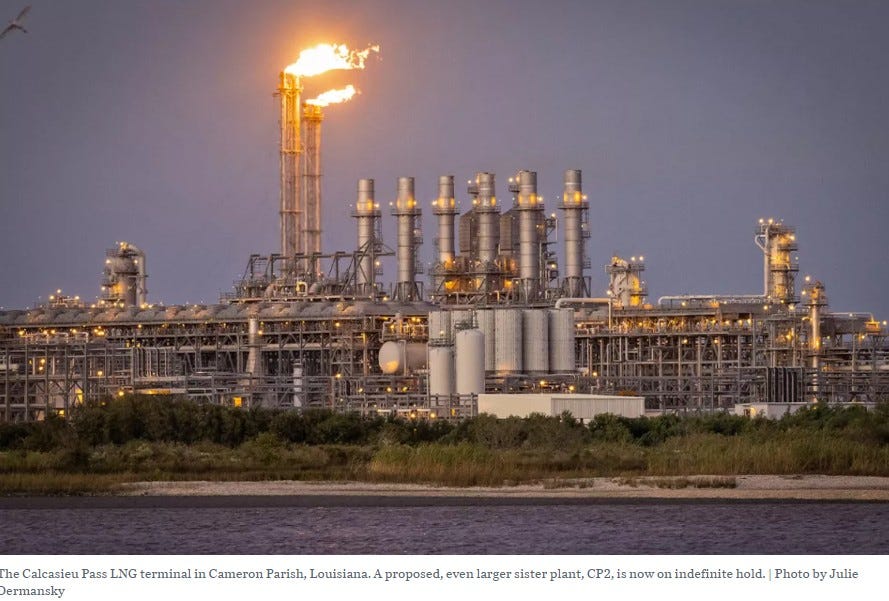Let’s look at recent climate news and get an overview of the state of the earth, if possible. It’s useful to ask these questions:
1. given we need to reach 350 parts per million, what is the current parts per million of greenhouse gasses in the earth’s atmosphere,
2. what is the current rate of change,
3. what news items show a contribution to heating or cooling
To answer Question 1, current atmospheric greenhouse gas emissions are 425 ppm, according to NASA.

To reach 350 ppm, which is not an agreed-upon goal of the Paris Climate Accords, we need to reduce the planet’s GHG emissions by 75 ppm, by dates not certain but generally agreed to begin sometime in the last decade. The Paris Agreement of 2015 asserts the goal of limiting global temperature increase to well below 2 degrees Celsius, while pursuing efforts to limit the increase to 1.5 degrees. In 2018, the IPCC’s Special Report: Global Warming at 1.5 Degrees Celsius concluded the difference between 1.5 and 2 degrees Celsuis could mean substantially more poverty, extreme heat, sea level rise, habitat loss, and drought.
So let’s get to the news.
Per Axios, “Countries around the world joined in the Earth Hour environmental campaign by going dark from 8:30 to 9:30pm in their local time zones on March 25, 2024.
“The UN says "Lights Off" is the "largest global environment movement," as "millions of people around the world switch off the lights to shine a light on the plight of our planet."
How much GHG in ppm were reduced by Earth Hour Lights Off this year?
None, says the World Wildlife Fund. They just want you to think about your intentions. We should all live meaningful, intentional lives.
But Ajay Choudhary has made a calculation based on some reasonable assumptions. (These are modelling assumptions, not based on CO2 sensors’ data.)
The exact amount of carbon emissions that would be saved if everyone in the world switched off their electric lights of 10 watts for one hour would be 542 metric tons of CO2.
How does 542 metric tons of CO2 translate to parts per million of CO2?
Research Gate tells us that to reduce CO2 levels by 1 ppm, we need to remove enough CO2 to decrease the total mass of CO2 in the atmosphere by 1 part per millionth of the total mass. This is equivalent to:
(1/1,000,000) x 2.1297 x 10^15 kg CO2 = 2,129.7 metric tons of CO2. So our hour of lights out = 542 tonnes of CO2 out of a necessary 2,129.7 tonnes, or about 25%, to reduce atmospheric CO2 by 1 ppm. Note that the mass of the atmosphere is a dynamic event, so this is a calculation.
Is Earth Hour’s one-time CO2 reduction trivial, marginal, irrelevant, good, bad, IDFK, potentially salvific, or potentially KYAGB, Earth?
One answer: Yes.
Next news item, reported in December 2023 by Reuters:
This week ends with a somber reflection on the United Nations COP28 climate deal.
The deal for the world to transition away from fossil fuels was hailed as a historic achievement at the U.N. climate summit in Dubai, but there's a good chance it won't achieve its ultimate goal – holding global warming to 1.5 degrees Celsius.
For months, COP28 President Sultan al-Jaber had described that 1.5C limit – first stated in the 2015 Paris Agreement – as his "North Star" or guiding principle for the summit.
But year after year, that target slips further away as the world's planet-warming emissions are still rising, and temperatures are hitting new heights.
Scientists said that, while the climate deal was unprecedented, it still just isn’t enough.
"It's a landmark result because it's the first time we've said we're going to reduce fossil fuel use," said James Dyke, an earth systems scientist at the University of Exeter in Britain. "But you can forget about 1.5C.”
OK, that’s pretty clear.
On the other hand, the December 2023 COP 28 agreement recommits the world to the 1.5°C warming target of the 2015 Paris Agreement, a goal reiterated 13 times in the text, and clearly states that the science dictates countries must cut emissions by 43% by 2030, and 60% by 2035 relative to 2019 levels.
It also commits to reaching net zero carbon dioxide emissions by 2050, calls for a tripling of global renewable energy capacity, and slashing methane emissions.
So, how do we parse these two statements? We conclude that we’re going to aim to meet these goals, but even if we do, they won’t get us to 1.5 C increase in atmospheric greenhouse gas parts per million.
Now what?





Now what? Well, Western (or "first world") countries won't feel that much impact in the short term. These things take a long time to change. However, vulnerable areas of any country and especially in the developing world will be severely impacted by bad weather, sea level rise, beach erosion, the salting of fresh water sources, crop failures and livestock deaths. I'm not even counting the impact on the natural world, animal and plant life on land and in the seas. So if you are a well-to-do westerner, buckle up for some rough times. Otherwise you're looking at mayhem, death, war and vast numbers of migrants trying to escape the worst places.